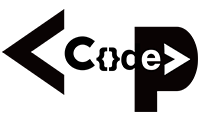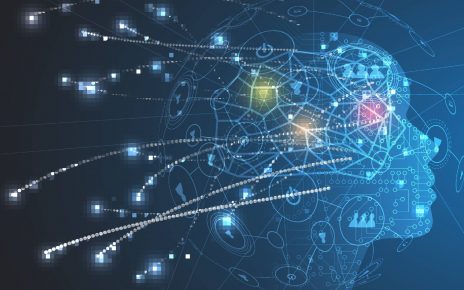Principles and types of organizations
Need of organizations, formal organizations structure, departmentalization, departmental characteristics, span of control, line and staff, checks and balance within the organizations, organizations design, understanding organization, developing a linear responsibility chart, lRC and job description, line organizations , staff organizations, matrix organizations, project organizations, pure project organizations, selecting an organizations for projects, organizations of the future
Need of organizations
A person to be success in any spheres of life needs the support from other people, to which we call organized activity. A person has unlimited potential; however, the potential will remain unrealized if not carried out properly. An organization means net work of individuals created to achieve a goal. Any plan, whatever may be its scope from entirely personal to international it requires organized activity to fulfill. Hence this article tries to discuss the issues related to the types of organizations required to fulfill the objectives of a person. We can take the examples of so many people, like Walt Disney, Bill Bates, Steve Jobs, who become successful because of their organization.
Formal organizations structure
Organizations formed under the bindings of some rules and regulation made by country is called formal organizations. Government ministries, departments, business organization formed under company act, partnership act, cooperatives, NGOs are the examples of formal organizations. Existing acts, rules, regulations controls formal organizations. The structures, duties, rights, scopes of the formal organizations are fixed. Formal organizations structure can be classified into vertical and horizontal.
Departmentalization
The total works of the organizations are divided into many measurable units and sections, which are called departments. The process of making such units is deparmentaion. There are many bases of departmentalization. They are:
- Process: engineering, accounting, marketing, etc.
- Clients: female departments, child departments,
- Geographical: eastern region, western region,
- Functions: marketing, finance, human resources, etc
- Product: heavy equipment, light cars, lorry, etc
Departmental characteristics
A departments has certain characteristics, they are;
- Distinct: a department is distinguished from other by any criteria. By name of the departments they should give the message what it means.
- Specializations: there are people having specialized in one area. Mechanical engineers work in operation departments, accounting specializations in accounting departments.
- Location: one department is located in one area, for example sales departments are established in market area and operation departments are located in industrial areas and finance departments in head office.
Span of control
How many person a supervisor can control is the question of span of control. There is no fixed rule. It is the ability of the person, the characteristics of subordinates, motivation level of employee, integrity of the subordinates, use of information technology(CCTV), nature of work, culture of the organizations, determine the issues of how many people can be controlled by a supervisor.
Line and staff
There are two types of people working in the organizations. One is called doing line functions and another is called doing staff functions. Line function is receiving instructions and doing works. Staff function is suggesting and advising what is best. Line functions are mandatory in nature whereas staff functions are optional in nature, which means the advices need not be implemented if the receiver does not wish. Military administration is the example of line functions, where commander is not questioned by juniors about the reasonability of the orders because juniors are supposed to do only. This organization is traditional in nature.
Checks and balance within the organizations,
This principle establishes the practice that one particular employee should not be given rights to control everything in the organizations. In government organizations prime ministers are controlled by parliaments and judiciaries. Judiciaries cannot use go beyond what has not coded in the law. Parliament members have no executive power in isolation. They have power only in the parliaments. Similarly in business organizations CEO is controlled by BOD and BOD is by AGMS. Shareholder can raise his voice only in the AGM not in isolation.
Organizations design.
Organization means a group of people joining hands to accomplish common tasks. The common task can be successfully can be completed if they have abilities, they follow certain procedures, if they maintain certain standards, if they have certain norms, certain hierarchy, responsibilities, defined task, technology, etc. So, managers must define in advance who will be the employees, what will be hierarchical structure, responsibilities, technology, procedures, standardizations practice, etc and this process is called organization design.
Developing a linear responsibility chart
Linear Responsibility Chart (LRC) presents an overview of formal authority, responsibility and accountability. It allows everyone within an organization, including newcomers, to see the “big picture” and provides a standard by which progress can be monitored.
The linear responsibility chart makes a clear distinction between roles, or job titles, and the individuals who perform those roles. Each project typically has a single project manager, but there may be many such project managers within an organization.
Job description
Job description consists of the list of all duties to be performed by the employees of the organization. It is the general principles of the organizations that it must assess its members based on the assigned jobs to the members. Job description define what duties are to be done, who should be reported, what procedures should be followed, who works under him/her, what are the working conditions, etc. it can be said that an organizations total performance equal to jobs of the total individuals working for the organizations.
Job description and linear responsibility chart can be differentiated only in one sense that is job description is individual employees list of tasks where as linear responsibility chart is the list of the responsibilities of many employees performing related jobs displayed in a single chart of paper.
Line organizations
An organization that practices the relation of employees in line is called line organizations. It means that one employee has relation with another employee who is in line. This follows the principle that one subordinate has one supervisors. This is traditional types of organizations but very simple. This is authoritative in nature because subordinates have no right to raise questions on the orders issued by superiors who are in line.
Staff organizations
Staff organizations are the organizations that provision the advisory functions for superiors who need advises. In this type of organizations, some advisors or advisory bodies are appointed to give advices to superiors who are busy every time. The relation of staffs and supervisors are generally horizontal it means they can control each other. It is the right of the employee whether to accept advices or not. This types of organizations prevents the superiors of the organizations from being authoritative, because advisors give them suggestions in this respect.
Selecting an organizations for projects
Project organizations
An organization that simply describes the relations of the employee working for the project is called project organizations. How employees maintain relations is displayed through this organizations structure. One example is given under. Project organization can take three forms: functional organizations, pure project organizations, matrix organizations.
Advantages
- Promotes skill specialization
- Reduces duplication of scarce resources and uses resources full time
- Enhances career development for specialists within large departments
- Facilitates communication and performance because superiors share expertise with their subordinates
- Exposes specialists to others within same specialty – facilitates growth
Disadvantages
- Emphasizes routine tasks and encourages short time horizons
- Fosters parochial perspectives by managers and limits capacity for top-management positions
- Multiplies interdepartmental dependencies and increases coordination and scheduling difficulties
- Obscures accountability for overall results
Key Characteristics
- Project teams formed within the functional units.
- Nobody responsible for the entire project.
- Leadership occurs within functional units (expertise centers).
- Leadership belongs to technical experts.
Pure project organizations
In the case of pure project organizations this woks like task force. For a certain period of time the people of the project have no other works, they will be totally inclined towards their tasks.
Characteristics
- A small, self-sufficient and full-time team is set up.
- The team leader is like an entrepreneur.
- Leader has full responsibility over the project.
- Functional units are stable, provide support to project teams.
Advantage
- Useful when a project requiring major changes.
- Works like a separate specialized functional department
Disadvantage
- a strong divisiveness occurs between the project team and the parent organization.
- Project team members have difficulty in going back to their functional units when the project is over.
Matrix organizations
In the organizations if employees have relations with two different places. Some time there need to maintain balance relation with the two or more supervisors. In multinational companies, the managers and employees should follow the instructions received from the host country and home country. Therefore, the organizations become matrix in nature so is called matrix organizations. A matrix mean and element defined by row and column and by isolating row or column the elements of the matrix cannot be defined.
Advantages
- Makes specialized, functional knowledge available to all projects
- Use people flexibly, since departments maintain reservoir of specialists
- Maintains consistency between different departments and projects by forcing communication between managers
- Recognizes and provides mechanisms for dealing with legitimate, multiple sources of power in the organization
- Can adapt to environmental changes by shifting emphasis between project and functional aspects
Disadvantages
- Can be difficult to implement
- Increases role ambiguity, stress, and anxiety by assigning people to more than one project
- Performance is lowered without power balancing between projects and functions
- Makes inconsistent demands and can promote conflict and short-term crisis orientation
- May reward political skills over technical skills
Nowadays organizations give importance to internal resource view to gain competitive advantage. This view believes that if organizations focus on its resource strength it can grow and become sustainable. For this, internal human resource should be capable and there should develop a suitable culture of learning and cooperation so that people share innovative ideas to lead the organization.
Organizations of the future
Characteristics of the Responsive Organization for the future
| Structure: |
Should be |
Decentralized, flexible, flat and organic |
| Top Management Philosophy: | Collaborative/ cooperative | |
| Employee Loyalty: | Loyalty to organization and customer | |
| Means of Ensuring Performance: | Shared values | |
| Culture: | Strongly held values of openness, innovation, learning |
The concept of mechanistic and humanistic organizations
Now a day to understand organic organization, it is essential to compare it with traditional organization that value rules and regulations rather than existing necessity of the changed circumstances. The table given below differentiates it from the traditional mechanistic organization.
Differences between mechanistic and organic organizations
| Mechanistic Organization Form / Management System | Organic Organization Form / Management System | |
| Appropriate Conditions
|
Stable
|
Changing
|
| Distribution of tasks | Specialized differentiation of functional tasks into which the problems and tasks facing a concern as a whole are broken down | Contributive nature of special knowledge and experience to the common task of the concern
|
| Nature of Individual task | The abstract nature of each individual task, which is pursued with techniques and purposes more or less distinct from those of the concern as a whole: i.e., the functionaries tend to pursue the technical improvements of means, rather than the accomplishment of the ends of the concern
|
The “realistic” nature of the individual task, which is seen as set by the total situation of the concern
|
| Who (re)defines tasks | The reconciliation, for each level in the hierarchy, of these distinct performances by the immediate superiors, who are also, in turn, responsible for seeing that each is relevant in his own special part of the main task
|
The adjustment and continual redefinition of individual tasks through interaction with others
|
| Task scope | The precise definition of rights and obligations and technical methods attached to each functional role
|
The shedding of “responsibility” as a limited field of rights, obligations and methods (problems may not be posted upwards, downwards or sideways as being someone else’s responsibility)
|
| How is task conformance ensured | The translation of rights and obligations and methods into the responsibilities of a functional position
|
The spread of commitment to the concern beyond any technical definition
|
| Structure of control, authority and communication | Hierarchic, Contractual
|
Network, Presumed Community of Interest
|
| Locating of knowledge | Reinforcement of the hierarchic structure by the location of knowledge of actualities exclusively at the top of the hierarchy, where the final reconciliation of distinct tasks and assessment of relevance is made
Omniscience no longer imputed to the head of the concern; knowledge about the technical or commercial nature of the here and now may be located anywhere in the network
|
|
| Communication between members of concern
|
Vertical; i.e., between superior and subordinate
|
Lateral; i.e., between people of different rank, resembling consultation rather than command
|
| Governance for operations and working behavior | Instructions and decisions issued by superiors | Information and advice rather than instructions and decisions
|
| Values | Insistence on loyalty to the concern and obedience to superiors as a condition of membership | Commitment to the concern’s task and to the “technological ethos” of material progress and expansion is more highly valued than loyalty and obedience |
| Prestige
|
Greater importance and prestige attaching to internal (local) than to general (cosmopolitan) knowledge, experience, and skill
|
Importance and prestige attach to affiliations and expertise valid in the industrial and technical and commercial milieux external to the firm
|




